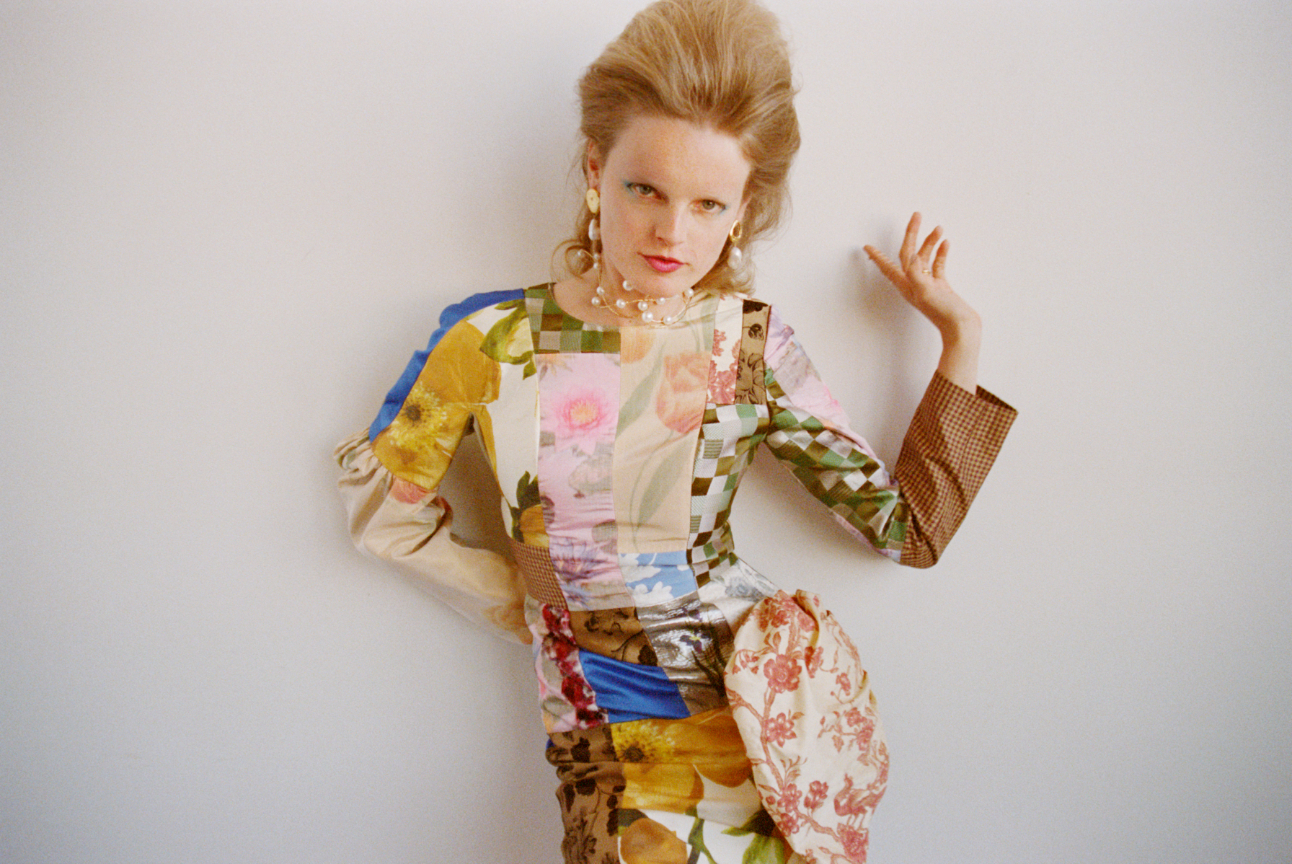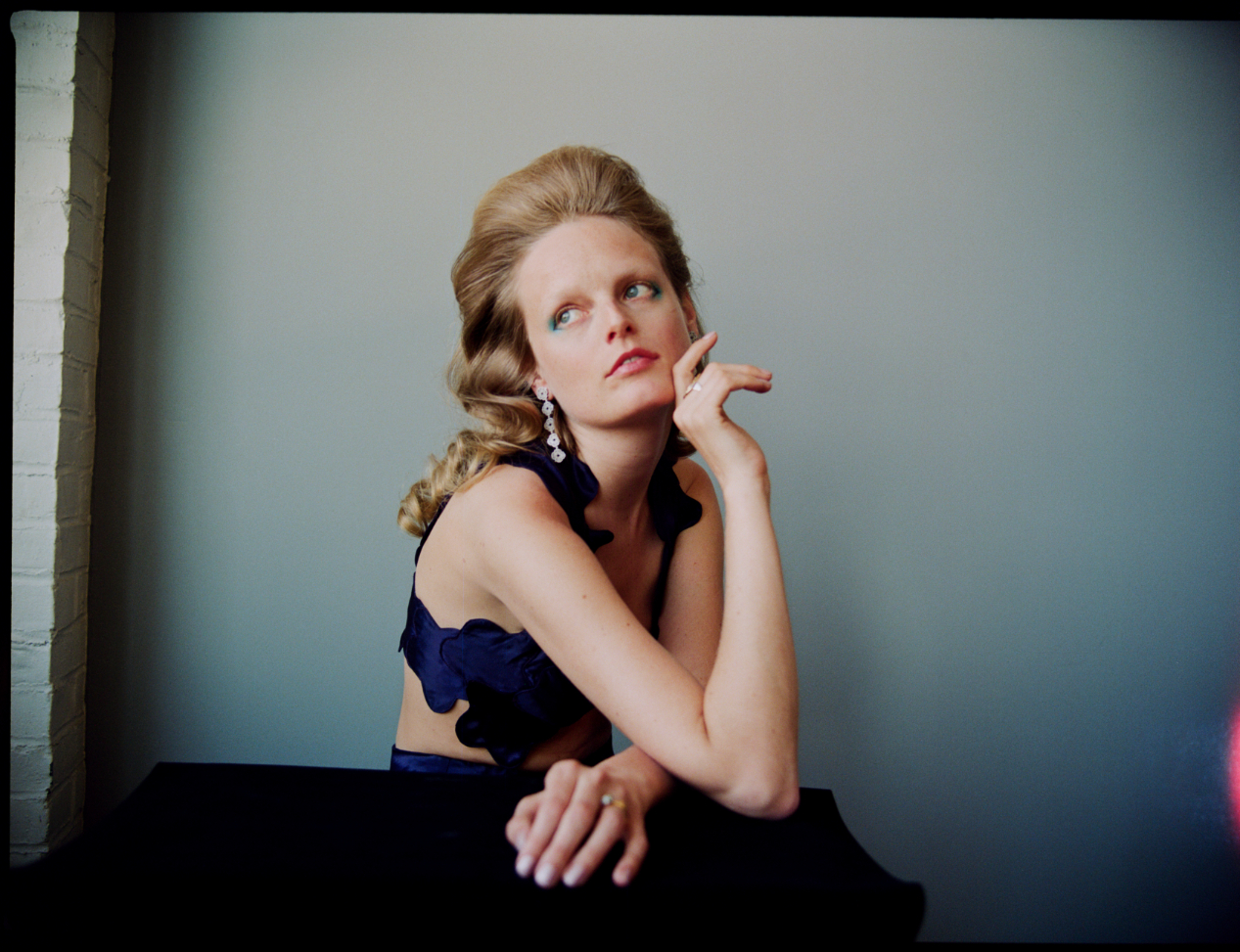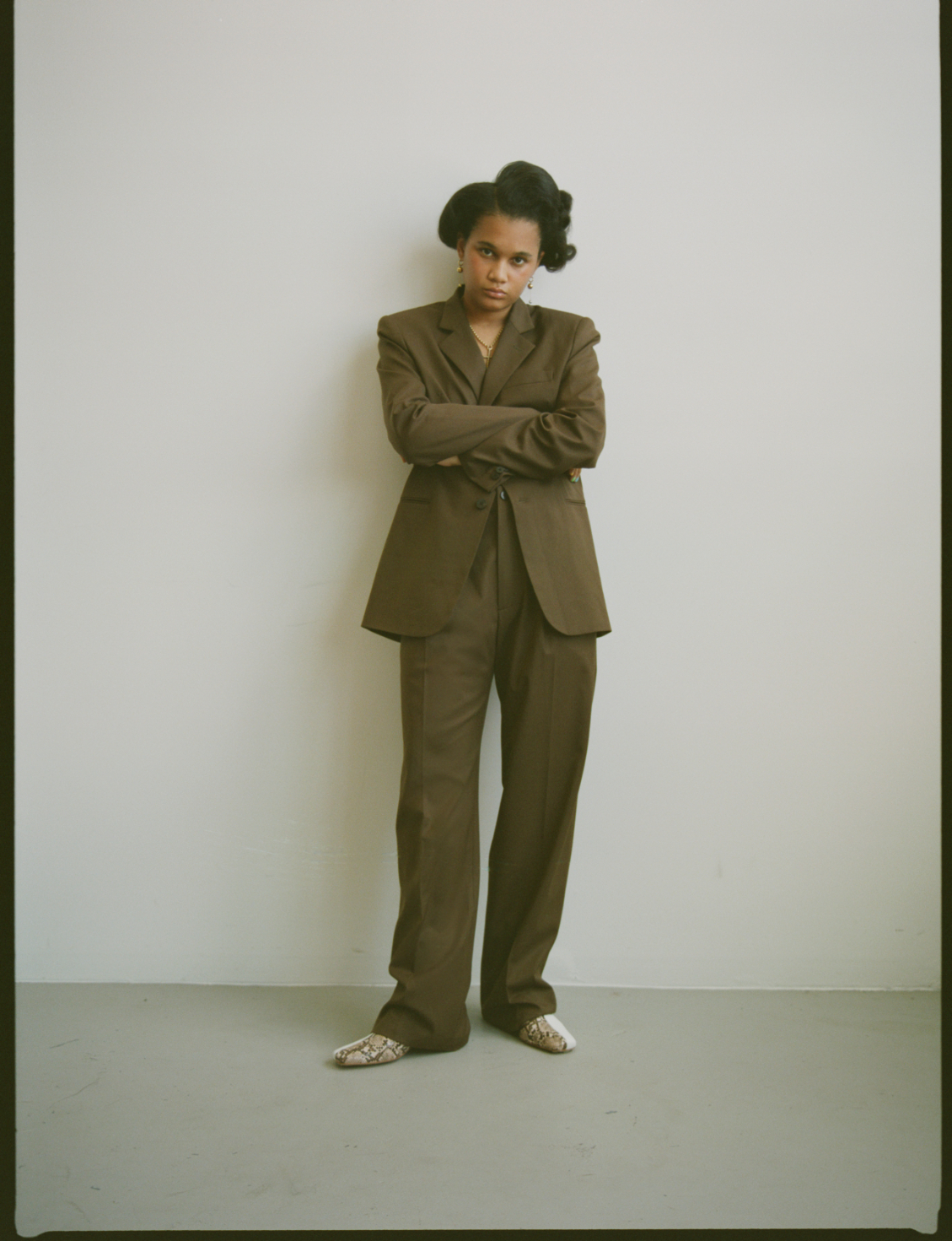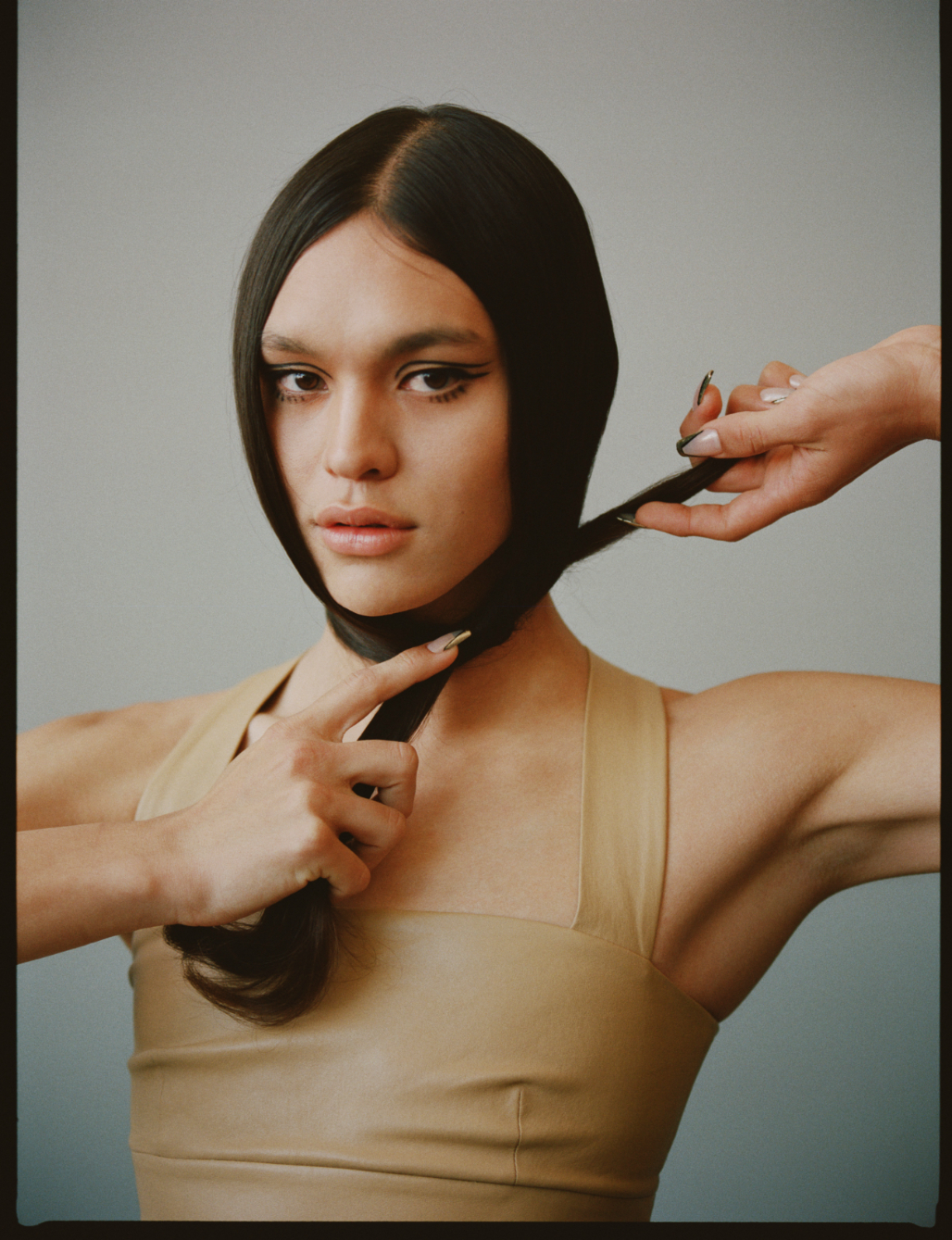
The past year was one that left more questions than answers but what is clear is giving a platform is the most essential step towards changing systems. Nonbinary, intersex, and trans people have been vital components towards political and economic progression within the LGBTQIA+ community yet have had their experiences diminished. Questioning the terminology surrounding identity, attraction, expression, and gender — the trans, intersex, and non-binary communities have continued to proudly represent themselves and live out their multifaceted truths, despite political leaders’ threat to undermine their tremendous strides. Through fashion and media, more of the world is now privy to their shared experiences, however flawed and incomplete the representation might be. As Pride festivities continue through this month and beyond, photographer Hao Zeng captures for Models.com some of the leading faces within modeling to talk about the industry they love, the construction of personal identity, and dismantling the barriers between us all.
Stylist Becky Akinyode
Features Editor Irene Ojo-Felix
Hair Dylan Chavles
Makeup Kento Utsubo
Nails Kayo Higuchi
Production Sasha Grinblat
Photo assistants – Andrew Leguillow and Lamell Parel | Styling assistants – Delaney Williams and Jaidev Alvarez | Hair assistant – Miller Bracket | Makeup assistant – Seiji
Special Thanks to Area1202 Studio
Hanne Gaby Odiele, Benzo Perryman, Charlie Nishimura, Dara Allen, and Juno Mitchell

Hanne Gaby Odiele They/Them
When industry icon Hanne Gaby Odiele first came out as intersex in 2017 it sent a shockwave through media and they quickly became one of the most notable faces representing the intersex community. “We are often told we are an anomaly and we would never encounter anyone like us,” Odiele discloses. “Luckily these days with the internet and through social media, we have been able to find some sense of community which really helped me find and build my identity. My identity is constantly changing especially since I let go of trying to conform to the binary standards.” Describing their 2017 experience as a relief, as a model Odiele would constantly be in fear of being found out and losing their career. “I found out I was intersex only weeks before I got discovered to model. I wouldn’t have been discovered if I didn’t know that part yet. I finally didn’t feel alone.”
The term Intersex refers to anyone born with variations in their sex characteristics, including variations in their hormones, chromosomes, internal reproductive anatomy, or external genitalia, and are often subjected to painful surgeries to fit within binary standards. “Almost 2 percent of the population has an intersex variation,” Odiele explains. “Almost 2 percent of the population could be subjected to unnecessary intersex genital mutilation at an age when they are not able to give consent. There are no laws to protect us and I think normalizing and de-medicalizing is the most important part of ending these practices.”
Understanding modeling’s role within navigating the gender spectrum, Odiele notes it’s been a needed tool in helping them construct their identity. “Modeling has helped me so much to find my confidence and got me in touch with my femininity or at least what’s to be perceived of that,” Odiele reveals. “Modeling is like getting into drag. I get to explore a different side with each story, runway, and outfit I put on. ‘Fashion’ is my mask, and underneath I’m still me.” Since the pandemic started, Odiele was unable to visit their overseas family and the intersex community helped mitigate the loss of time. “Intersex liberation is a super important step in queer liberation. We are a young community who are still breaking loose of the medical-industrial complex but we are not new! Intersex people have always been here and always will. We are not broken we are not mistakes.”


Benzo Perryman They/Them
What Brooklyn’s Benzo Perryman lacks in experience, they make up for in wisdom as the queer model rookie that debuted on the cover of Vogue Italia’s September 2020 issue formulated their ideas on identity and gender as early as 10 years old. “I was looking in the mirror and wondered why I felt different than all my friends and I first became comfortable with who I am at 22 years old.” This young age was also when they first picked up a camera and identifying as non-binary, their description of gender’s fluidity shifting over time becomes clear once you see their personal work like the zine, The Colors We Don’t See at The End of The Rainbow. “My dad had a few cameras that I liked to play with and first brought me to photography. My first subject was my little sister and I shoot my friends very frequently.”
When it comes down to what the industry can do to be more inclusive, Perryman highlights how supportive work environments that don’t gloss over details are key for non-binary creatives to feeling safe. “The industry can be more inclusive towards non-binary people by including us in castings and jobs and by recognizing our preferred pronouns.” The rising new face who would love to work for Saint Laurent and Gucci has key advice to other non-binary or gender non-confirming models wanting to enter the industry. “Be yourself, love yourself, and keep going. I hope others can be understanding of who we are when on set.”


Charlie Nishimura They/Them
An editorial debut for Vogue Italia launched Charlie Nishimura’s career but last year was when they truly came to the forefront. With major editorials in Teen Vogue, Vogue España, and Vogue Mexico, the rising rookie was no stranger to the industry having attended FIT for fashion design and growing up as a femme, non-binary person Nishimura defined themselves with fashion early on. “I feel like from a super young age I was obsessed with Barbies and princesses,” they explain. “I always connected more with the feminine. I wasn’t afraid to wear dresses or wear headbands. Definitely, I feel who I am now, connects the most with how I was as a child.” Since then, Nishimura has used their platform to highlight how essential fashion is in aiding and amplifying the trans and gender non-conforming community. “I had to learn and live life to get to this place where I feel so strong in my person. Even what I’m doing now within modeling, representation is important. I feel like I didn’t know what being trans was until more recently and obviously, it’s exploded into the mainstream.”
What is important to Nishimura is that trans inclusivity and education go beyond billboards and pride slogans and enact change behind the lens, as well. “I’m here representing my community to show others what is possible. But as important as that is, it’s also important for other people like me to be behind the scenes. Often I’ll show up and it’s mostly cis white men or I’ll be the only person of color or I’ll be the only queer person. It helps when you look behind you and it’s people you feel are understanding.” Fear has no place in education or understanding, and Nishimura wishes for cis-gendered people seeking to learn more about gender non-conforming experiences to speak up and just ask. “People are very afraid on one hand, that’s a good thing so people can be cautious but on the other hand, you feel you’re an obstacle. I’m so open and full if they would just ask me questions. I’m happy to tell you, and if you come at it with an open attitude and a genuine spirit, I’m always willing to take the time.”


Dara Allen She/Her
When model and fashion stylist Dara Allen first moved to New York she knew she wanted to work in fashion but didn’t know to what capacity. Now 4 years after her stunning debut when she walked Marc Jacobs, appeared in a Helmut Lang ad and editorials for Dazed and Candy Magazine ( a rare accomplishment for an unsigned new face), Allen has fully embraced her rising styling career, a little over two years in the making. As a trans woman acknowledging the intolerable violence against the trans community, visibility and representation can be a double-edged sword, even in fashion. “As a singular person, I feel like being trans and being extremely visible, you’re always dismantling. I don’t think it’s necessarily the sole solution because that is sometimes the danger. There’s a long history in fashion of trans people being part of the creative process, even if that’s not really widely known.” Describing her relationship with fashion as “a visual language that’s built upon an unspoken dialogue” she highlights how it steadily became the main route in understanding herself. “I don’t know if I could tell the story of who I am without telling the story of being interested in fashion and beauty,” Allen describes. “They’re so connected because for me it’s always been the language through which I was able to understand my place amongst other people or connect with others. Not until I came to New York did I fully understand who I am and that I’m supposed to be here.”
During the past year’s quarantine, Allen’s community quickly became a centering, saving grace that kept her from idle despair. “A lot of the way community is built for me is through the bond of making things and through the bond of creative expression,” she explains. “During that intense part of last year, I was living with my best friends who also work in fashion. One’s a photographer and another a stylist and we were making images in our apartment in a set-up studio.” A lover of Halston and Diana Vreeland, Allen recognizes fashion as influential yet insular and emphasizes the importance of individual agency within all LGBTQIA+ expression. “I don’t need to apologize or hide who I am, but I also don’t need to emphasize who I am. Other than that, I’m here to work as the model. I think there is more individual agency and the ability to make whatever narrative it is you want for yourself. That’s really what is exciting to me or what makes sense to me because people aren’t afraid anymore to choose their path.”


Juno Mitchell He/Him
When model Juno Mitchell first sauntered down Marc Jacobs at the top of 2020, he stood out even next to his show partner, Miley Cyrus. In a crisply tailored, double-breasted suit the American new face was the only man to walk what would be Jacobs’ last live show and soon after dominated in Milan and Paris working for Marni, Valentino, and Alexander McQueen. That high of a solid runway season increased his confidence, illuminating his desire to finally and privately transition into his truest self, starting hormones and completing affirming surgery. “Socially transitioning, it’s completely new from me because I’ve been passing for the past few months,” Mitchell explains. “I’m actually looking forward to just working out more and being able to try out different things that I was uncomfortable with doing before. I’m so excited to be able to do menswear and to be able to do things that I want to do. I never got that chance.” When it comes to LGBTQIA+ representation Mitchell highlights how important media is, both in fashion and entertainment, in shaping the future of the movement. “Everything that we see on TV, affects the youth and informs older people. Just even with Indya Moore being on Pose, a non-binary, trans, with they/them pronouns. Honestly, seeing them on TV is what made me want to actually go for modeling.” His recent Vogue Italia September cover was a milestone not only for his career but the continued push for making sure fashion allows equity for trans perspectives throughout the industry, not just in front of the camera. “First of all, pronouns are a huge thing. I feel like everyone should just have their pronouns under their name or comp card because you can’t judge off a person on what they sound like. Making space to have that type of conversation and making sure people feel comfortable on set, and no one’s being transphobic.”








